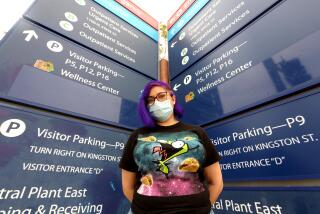Therapy Centers Are the Wave of the Future
- Share via
SAN FRANCISCO — A relentless drive to cut health care costs is driving solo psychologists and psychiatrists out of business, in the view of Nicholas A. Cummings, former president of the American Psychological Assn.
What will take their place will be new, all-purpose groups of psychotherapists under contract to health maintenance organizations (HMOs) and to insurance companies such as Blue Cross, he predicts.
Last July Cummings formed a for-profit firm called American Biodyne that already operates five psychotherapy centers in Arizona and Hawaii serving 250,000 subscribers. By the end of the year, Cummings thinks, the number will triple.
He says insurance companies will send their subscribers to these new centers because they can achieve huge savings--and because these centers can be more effective than individual therapists operating alone in their offices.
“Fifty percent of the solo practitioners will not be in practice 10 years from now,” Cummings says. “They are an endangered species.”
The new approach applies specific therapies to specific problems, Cummings says, whereas certain other therapists use the same approach for every problem.
“If it’s a Freudian, you get the couch. If it’s a Jungian, you’re going to paint pictures. If it’s a behaviorist, you’re going to get desensitization,” he complains.
Cummings’ method is called targeted therapy--meaning therapists mostly zero in on the patient’s specific problem of the moment, rather than seeking to analyze every cranny of the unconscious.
“We had an agoraphobic, housebound for fear of open places, and we dealt with it successfully in 45 minutes,” he says.
American Biodyne has worked out 58 therapies for such problems as depression, alcoholism, employment, schizophrenia, compulsive gambling and even addiction to therapy. Thus, the new therapy center offers greater resources than the practitioner who deals with all problems alone.
Sixty percent of visits to physicians’ offices are by patients with no physical illness, but are suffering from physical complaints that are based on emotional problems, Cummings says.
He cites numerous studies showing that better psychotherapy can cut that waste by up to 80%, and this is where the insurance carrier saves huge amounts.
“We identified one woman who made 422 doctor visits in one year. In three months of therapy, we got that number down to zero.”
About 5% of patients never want to quit therapy, he says, “and they’re the people that scare the insurance carrier that has to foot the bill.” So Cummings’ model includes a program for therapy addicts.
His method of dealing with specific problems means that therapy can be brief, but under his contract with insurance carriers the number of sessions with a patient is unlimited. So is the length of each session.
“We do house calls. If there is a problem related to the workplace, we go to the workplace, where the action is,” he says.
American Biodyne gives its staff therapists lengthy additional training “because we have to knock out of them what they learned in graduate school.” Too many would-be employees lack the flexibility to get out of their own “psycho-religion,” Cummings says.
While his approach does not attempt “to cure” a patient of all problems at one time, it does give the message that psychotherapy should be “intermittent throughout the life cycle.” In other words, the patient should return off and on as new and different problems occur.
“I have been doing brief intermittent therapy for long enough so that I have seen not only children and grandchildren of my patients, but I’ve recently seen two great-grandchildren.”
Cummings’ views were influenced by his experience of serving for 25 years as a chief psychologist of Kaiser Permanente, the nation’s first health maintenance organization. He also is a former president of the California School of Professional Psychology.
“We’re going to see a full-scale health revolution in the next two years. And make no mistake, if psychology is not prepared for it, psychologists are going to find their practices drying up.”
Cummings warns his colleagues against conventional group practices in which several therapists “who practice therapy exactly the same way” simply share an office. He also warns against deals with insurance carriers in which patients are seen at reduced fees in therapists’ own offices because he says the method ultimately is less efficient.
Cummings’ advice to his colleagues is to develop centers similar to his own “before you go down to your office one morning and find out you don’t have any patients.”
More to Read
Sign up for Essential California
The most important California stories and recommendations in your inbox every morning.
You may occasionally receive promotional content from the Los Angeles Times.










